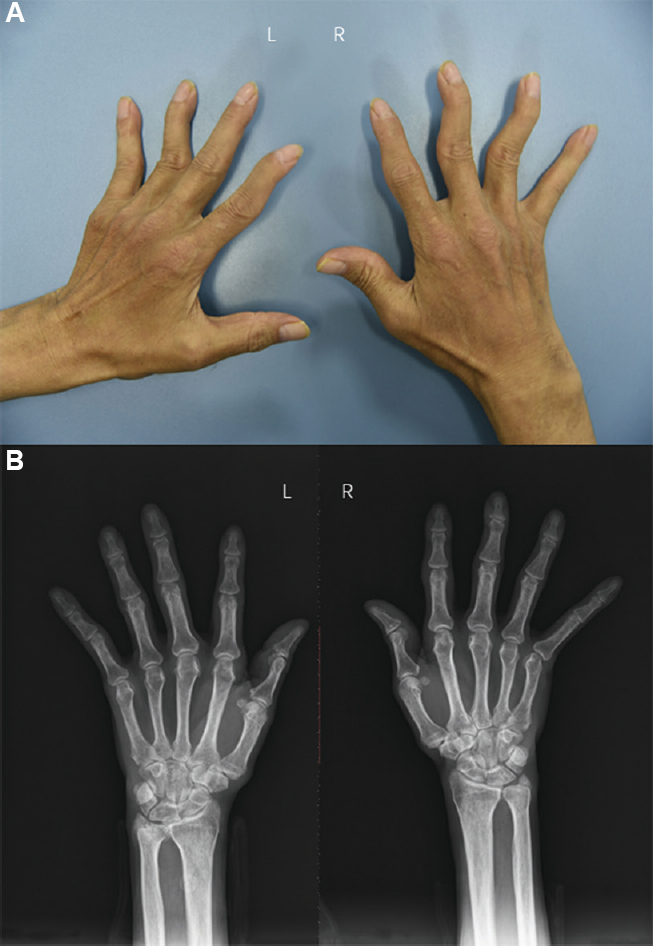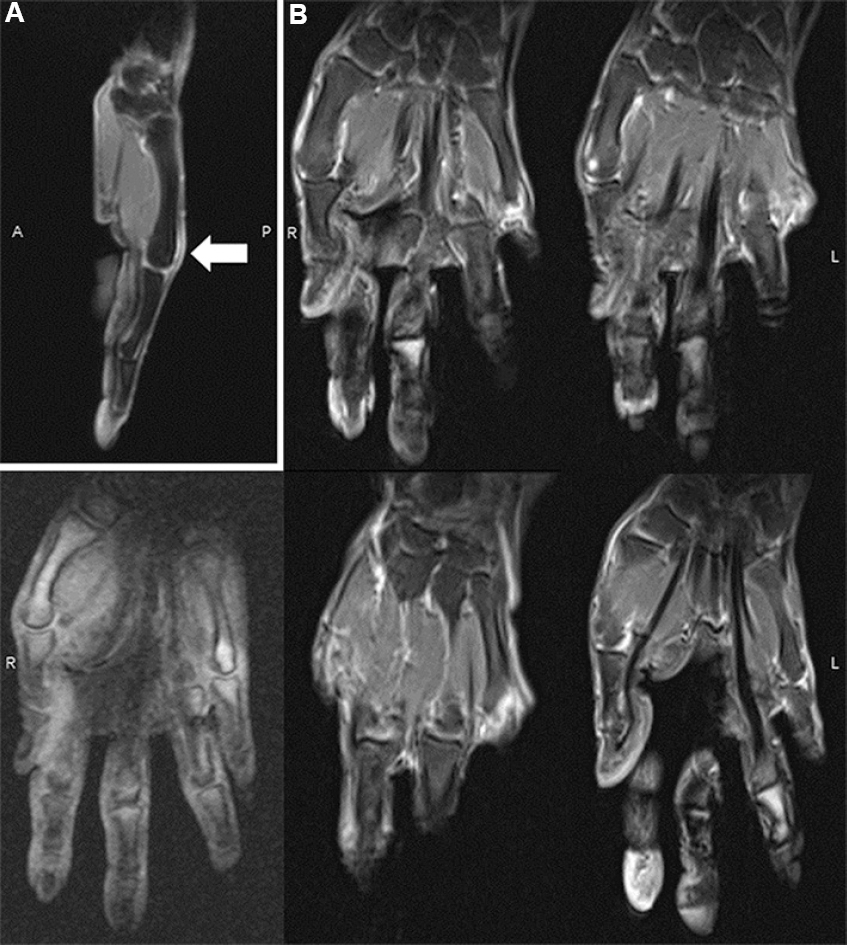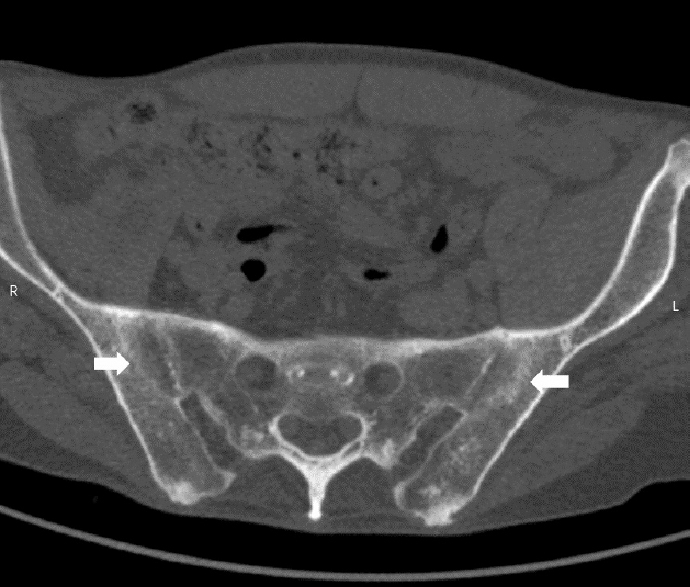Translate this page into:
Swan-neck hands in a patient with ankylosing spondylitis
*For correspondence: yingeng0815@163.com
-
Received: ,
This is an open access journal, and articles are distributed under the terms of the Creative Commons Attribution-NonCommercial-ShareAlike 4.0 License, which allows others to remix, tweak, and build upon the work non-commercially, as long as appropriate credit is given and the new creations are licensed under the identical terms.
This article was originally published by Wolters Kluwer - Medknow and was migrated to Scientific Scholar after the change of Publisher.
A 60 yr old male† presented to the outpatient department of Rheumatology and Immunology, West China Hospital of Sichuan University, Chengdu, PR China, in October 2017, with a 25 yr history of ankylosing spondylitis (AS) that was characterized by swan-neck hands (Fig. 1), lower back pain and stiffness. He had no history of hand trauma or congenital disorders in the past. On examination, he was found to have positive Schober's test and limitation of sagittal and frontal spine motion. Laboratory findings revealed positive human leucocyte antigen-B27 (HLA-B27), elevated C-reactive protein and negative antinuclear antibodies, anticyclic citrullinated peptide antibodies and rheumatoid factor. The magnetic resonance imaging scan of his hands showed enthesitis and absence of cortical damage (Fig. 2). Sacroiliitis grade III bilaterally was revealed on the computed tomography of pelvis (Fig. 3).

- (A) Clinical picture showing swan-neck deformity on both the hands. (B) Radiograph of the hands showing no bone erosions. L, left; R, right.

- (A) Sagittal magnetic resonance imaging of hands showing enthesitis (arrow), and (B) coronal magnetic resonance imaging revealing no bone marrow oedema nor cortical damage.

- Computed tomography scan of the pelvis revealing bilateral sacroiliitis grade III (arrows).
Swan-neck deformity caused by AS passes through an inflammatory process of the tendon sheath, enthesitis and consequent weakness of the tendon, which compromises the functional capacity of the joints and imposes the risk of misdiagnosis of rheumatoid arthritis.
Conflicts of Interest: None.





